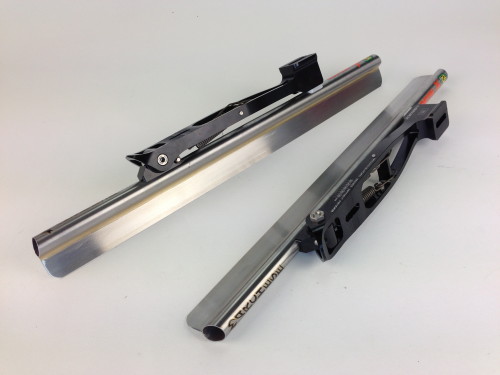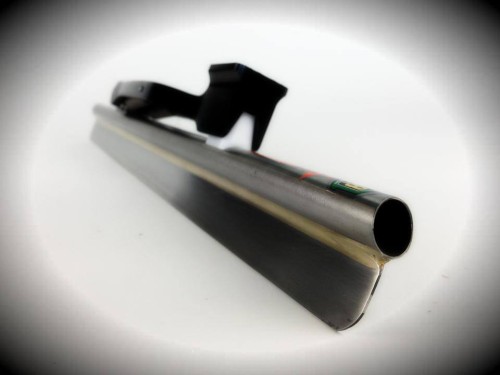Quick Review: Marchese 853
During the recent summer ice mini-season in Heerenveen, I had the opportunity to try the most recent offering from Marchese – the 853 blade. Designed to fit between the flagship 953 and softer 525 in the lineup (I think), it is built in such a way as to offer the best of both worlds. Does it? The proof – as they say – is in the pudding.
Of course, we aren’t talking about pudding, but ice skate blades, so rather than eat them, I mounted them on my ice skating boots, and went for a skate. They felt… interesting. I’ve written at length about the differences between the flagship offerings from the various different blade companies (Viking, Maple, and Marchese) in a previous post, which I encourage you to read.
First of all, they have addressed the main complaint that I had of the 953 blades – the turn in at the end of the push. Some might like it, but for my particular skating style the turn in at the end of the push interfered with the rhythm of how I like to push and feel the ice when I’m at full extension. This blade turns in much less, and my my mind more “naturally”, and initially the blade seemed to slide out from under me as I pushed, because I was pushing with the expectation of the same strong turn-in that I experienced with my previous Marchese blades.

Although it is difficult to see, the weld only occurs on one side of the blade. Despite this, there was no significant difference when pushing to either side.
Either due to the different method of welding, or to a slight difference in stiffness of the tube, the blade flexed in a more “predictable” way – predictable if you’ve grown up skating on maple or viking blades. The “flip” – the moment when you switch from outside to inside edge when skating the straights is still a bit numb, definitely moreso than a viking, but comparable to a maple blade.
Obviously, to give these blades a “proper” treatment, I would have to skate on them for a much longer time than a few hours, and I would also have to race on them, but my first impression is that Marchese have come up with a blade that behaves in a much more similar way to traditional viking and maple blades and thus would be easier to transition to. I will be very interested to see if this blade is widely adopted by the skating community and also to see what kinds of results can be had.
These blades can be purchased via the Cado Motus website.


Leave a comment